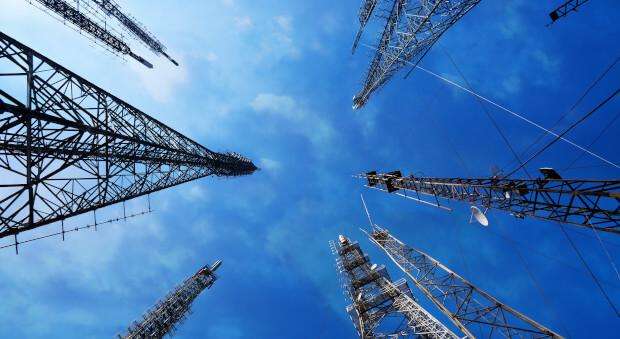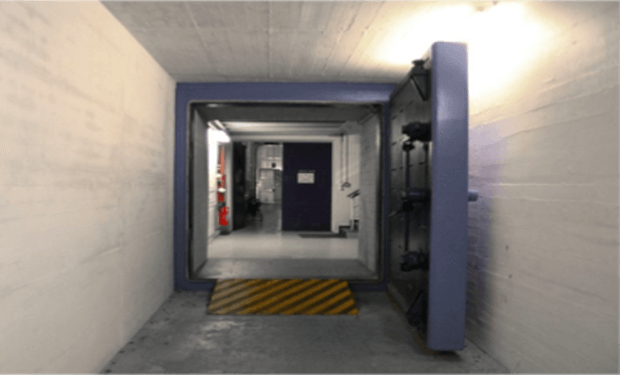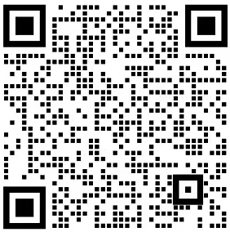From connecting IT systems to ensuring the integrity of financial transactions, synchronizing telecommunications, broadcasting television, and powering cities all rely on the availability of accurate and traceable time. Tampering with critical time systems can have devastating effects on society.
For example, telecommunication towers with overlapping coverage synchronize their time with millisecond accuracy to avoid interference when data is sent on the same frequency. If data transmission between towers is even slightly out of sync users experience slower data rates, lower cellular availability, and even loss of service. This becomes even more important for 5G networks where telecom antennas are placed closer together and data rates soar up to 20 Gbps. To provide quality service every telecom antenna needs to have access to time with sub-millisecond accuracy, delivered in a secure and reliable way. But achieving this is not an easy feat. [1,2]

Telecom towers use highly accurate time to sync their data transmission to avoid service degradation
Let’s take an example from Sweden, where RISE (the Research Institute of Sweden) has taken on the challenge of providing a single time scale UTC(SP) to critical services and the rest of Swedish society. To develop a robust distribution service of freely available, accurate and traceable time RISE works together with Netnod, a Swedish-based provider of services at the core of the Internet. GNSS/GPS plays a part in Netnod’s time servers by increasing timing accuracy to its utmost limits.
Secure time server
Sweden’s time service is based on Network Time Protocol (NTP), the standard for synchronizing time on computer systems. Netnod’s NTP service uses a distributed timescale on autonomous nodes throughout Sweden to provide a time service traceable to within 250 nanoseconds of UTC(SP).
In order to develop this highly accurate service (consider that one nanosecond is a billionth of a second), Netnod uses a highly robust setup. Each site has redundant servers, 2 cesium atomic clocks, and 2 Field Programmable Gate Array (FPGA) boards providing an extremely fast hardware implementation of NTP. This means connected devices can get NTP directly via the FPGA chip. As there is no software involved, this provides the most accurate and secure time possible.
Netnod has recently implemented the Network Time Security (NTS) protocol on their time servers to ensure that the time data cannot be manipulated or spoofed. The FPGA that Netnod designed to implement this, the most secure time server currently available in the world, contains more than 600,000 logic resources and almost 900,000 registers.
Netnod’s redundant time and frequency node, with cesium atomic clocks
GNSS improving time accuracy
Each Netnod time node in Sweden is equipped with cesium atomic clocks and uses the Global Navigation Satellite System (GNSS) to synchronize these clocks and achieve even greater accuracy. GNSS satellites are like flying clocks, since each one is equipped with its own cesium clock on board. The GNSS receivers inside each Netnod time node get the same time signal from one of the GNSS satellites and use this to adjust the local time scale, a time transfer process called “common view”. To find out about time transfer see How GPS Brings Time to the World. This results in even higher accuracy than would be achieved by one timing node independently.
Timekeeping security matters
For resilient common view calculations under any condition Netnod chose a high-quality timing GNSS receiver: PolaRx TR. Interference mitigation technology, such as AIM+, is essential to withstand malicious or accidental RF jamming. While jamming is a kind of white noise which overpowers GNSS signals, spoofing is a “smart” form of malicious RF interference, which sends false positioning or timing information into the receiver (see What is spoofing and how to ensure GPS security). High-end GNSS receivers offer protection, not only from malicious jamming and spoofing, but also from unintentional interference which can be generated by nearby equipment such as radio antennas or modems.
Not just accuracy, but also integrity
GNSS receivers have various levels of integrity or truthfulness. For example, receivers with high integrity give an indication when the information they output may be compromised and may not be fully reliable anymore. On top of accuracy GNSS receiver’s integrity is also a critical factor for Netnod.
“It’s more important to us that the GNSS receiver provides no information at all, rather than lying or guessing the measurements,” said Patrik F?ltstr?m, Technical Director and Head of Security at Netnod. “When accuracy is lost for any reason, we need to get an indication about that from the receiver.”
By using timing equipment with high security and integrity, Netnod provides the Swedish time scale with nanosecond accuracy under any condition.
Securely located for maximum protection
To secure its time nodes and ensure robust operation Netnod has placed its timing equipment in nuclear warfare bunkers, leased from the Swedish government. Five such bunker-nodes are in cities across Sweden and they act as a failsafe backup for each other.

Netnod time nodes are secured inside five nuclear bunkers serving as a failsafe for each other (image is indicative).
Time is of the essence for many applications
The accurate and secure time provided by Netnod is crucial for Sweden’s critical services such as telecommunication. Also, millions of devices connected to the Internet - from computers and smartphones to IoT devices like surveillance cameras - use Netnod’s NTP and Precision Time Protocol (PTP) services to synchronize their time. GNSS is an important component of the system which helps deliver accurate and robust time, the heartbeat of a modern society.
電話: 025-85577685
地址:南京市江寧開發(fā)區(qū)誠信大道990號(hào)優(yōu)尚天地3棟417室
企業(yè)微信
